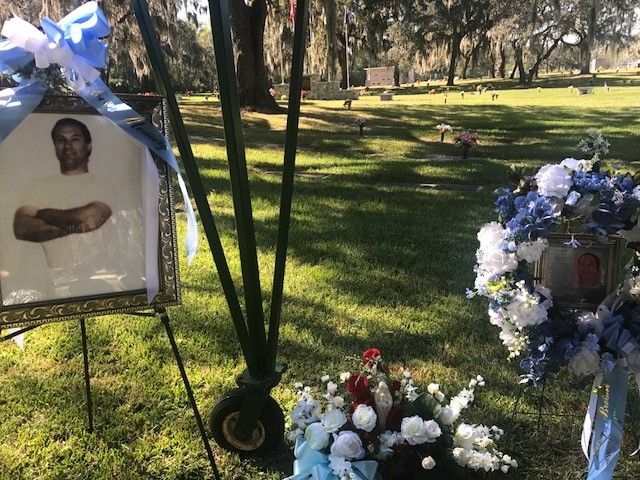Written March 12, 2017
Breaking News! On Thursday March 9, the Florida Supreme Court denied my long pending appeal and specifically lifted the previous “stay of execution,” effectively setting the stage for Governor Rick Scott to
reschedule my execution within the near future.
As
most reading this already know, all executions in Florida have been on
hold since the state supreme court granted me a stay of execution on
February 2, 2016 to consider whether the US Supreme Court’s January 2016
decision in Hurst v Florida applied to all previously imposed death sentence, such as mine.
Subsequently,
in December 2016, the Florida court issued a decision in Mark Asay v
State in which the court recognized that in light of the Hurst v Florida
decision there was no question that anyone who was condemned to death
by less than a unanimous jury vote was unconstitutionally sentenced.
However, in Asay v State, and its companion case of John Mosley v State,
a marginal majority of the court ruled that they would only grant
relief from illegally imposed death sentences to those whose sentences
were imposed and final, after June 2002 (when the US Supreme Court
issued its earlier decision that formed the foundation for the Hurst v Florida decision).
That
meant that those illegally sentenced after 2002 would have their death
sentences thrown out, but those whose sentences were “final” on their
first direct appeal prior to June 2002 would not get relief.
Many
in the media and elsewhere have since publicly questioned this finding,
arguing that it is fundamentally unfair and makes no sense. That the
court would recognize that the death sentences were unquestionably
illegal, but that it would allow those sentenced prior to 2002 to be
executed, while those sentenced after 2002 would be granted relief.
This
point will undoubtedly be argued before the US Supreme Court. What must
be emphasized is that what the Florida court did in arbitrarily cutting
off retroactive relief at 2002 is clearly unprecedented. No other court
has ever held that once a substantive new rule of law entitles to
retroactive relief, they would only apply it so some, but not to others.
A new rule of law is either retroactive or it is not.
The
question now is whether the Supreme Court will accept review of this
issue quickly. The Court accepts very few cases each year - and whether
or not they accept a review is completely within their own discretion.
For
this reason, it took 14 years (and 47 illegal executions) before the
Court finally agreed to review a case that argued that under Ring v Arizona (2002) those sentenced to death were entitled to relief. When the Court did finally grant review in Hurst v Florida, they all but unanimously agree that Florida was illegally sentencing all of us to death.
It’s
all but certain that the Court will eventually accept review of the
recent Florida Supreme Court ruling of partial retroactivity — but it
could take another 14 years and many more executions, and by that time I
may be long dead.
In
the recent decision denying my appeal and lifting the stay of
execution, the Florida court did grant leave to file a motion for
rehearing, so within 15 days (no later than March 24) my lawyers will
file a Motion for Rehearing challenging this ruling, but it will almost
certainly be denied within a matter of days, and I expect that the
governor will most likely reschedule my execution before the end of this
month. When that is done, the date will probably be set for some time
around the end of April.
However, let me emphasize that although this Hurst
issue has been getting all the attention, this is not the only legal
issue being pursued in my case, and I do have other appeals pending. In
the decision denying me relief they also (again) denied my request for
DNA testing of evidence that would support my claim of actual innocence.
This denial will be pursued further.
Additionally,
separate from this state court appeal, in 2015 my lawyers filed a
comprehensive appeal in the federal courts arguing that I am
constitutionally entitled to have full review of the readily available
evidence sustaining my actual innocence and that appeal remains pending
before the Federal Court of Appeals (Lambrix v Secretary, Dept of Corrections, Eleventh Circuit case no. 16-10251).
Recently, the Supreme Court issued a decision in a Texas Capital case (Buck v Davis)
that provides strong support for my claim of entitlement to full
federal court reviews of my substantiated innocence claim and I remain
hopeful that, based on the case, my federal appeal will not be formally
re-opened, and fully reviewed. If this is done, I am confident that my
convictions will be thrown out and I will be legally exonerated.
Because
lawyers who represented me many years ago did not “timely” present my
substantiated claim of innocence to the state courts in my original
post-conviction appeal (in 1988), under politically manufactures rules
designed to speed up executions, all evidence substantiating my
innocence has been “procedurally barred” from review before both the
state and federal courts. But the 2012 USSC case of Martinez v Ryan opened the door to finally overcome that procedural bar and have my innocence claim heard.
But
the federal courts in Florida and Texas have categorically refused to
allow death sentenced prisoners to reopen their federal appeals under
this 2012 Martinez rule. The recent USSC ruling in Buck v Davis
should now force these pro death penalty judges who control the Florida
federal courts to now reopen my case and allow the evidence
substantiating my innocence to be heard — at least I hope so.
But for now, I’m going to have to dance with death again, soon.
Subscribe to:
Post Comments (Atom)














No comments:
Post a Comment